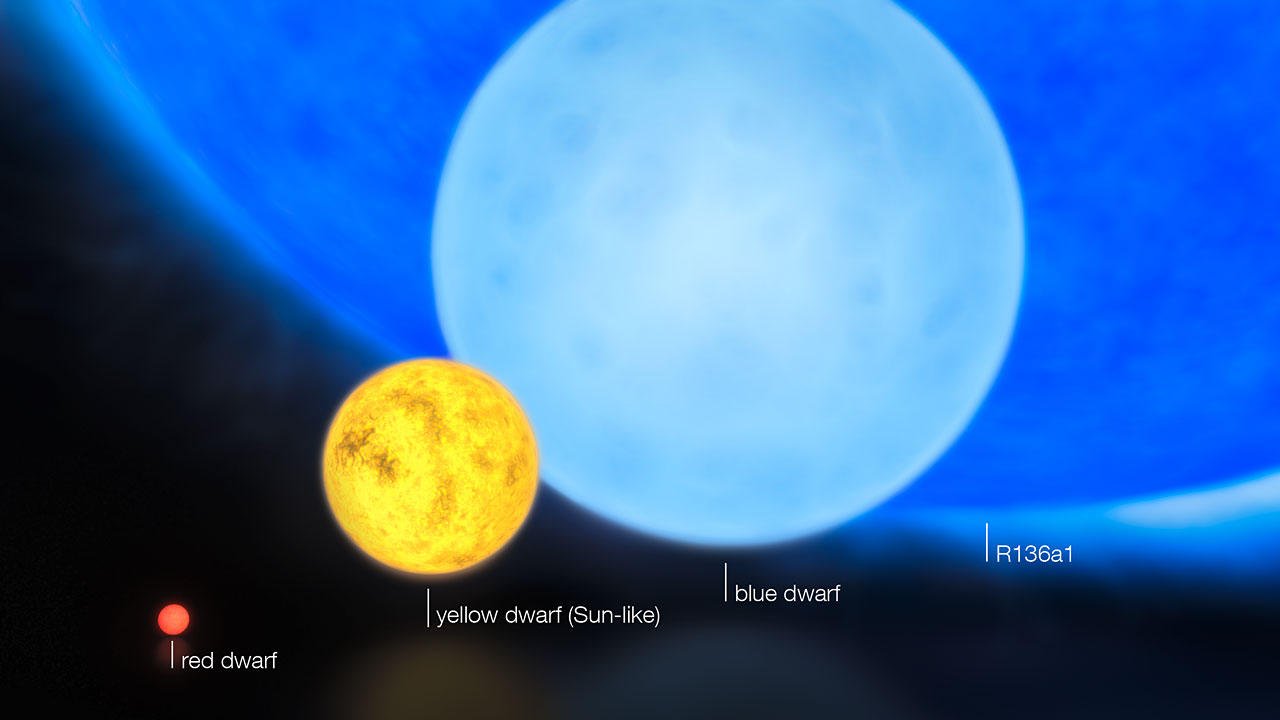
The scientist, Paul Crowther, professor of astrophysics, led an international team of scientists using both the Hubble Space Telescope and the European Southern Observatory’s Very Large Telescope to make the discovery.
What they found was a star, R136a1, located in the Tarantula Nebula within the Large Magellanic Cloud. The Large Magellanic Cloud is a small galaxy neighboring the Milky Way.
R136a1 surprised the scientists by its massive bulk, roughly 265 times larger than the sun. The star, which burns its fuel at an unusually rapid rate because of its massive size, was thought to have been much larger in the past, as much as 320 times larger than the sun when it was "born."
{modulepos inner_text_ad}
 Discussing his team’s findings, Professor Crowther said: "Unlike humans, these stars are born heavy and lose weight as they age. Being a little over a million years old, the most extreme star R136a1 is already `middle-aged´ and has undergone an intense weight loss programme, shedding a fifth of its initial mass over that time, or more than fifty solar masses. Owing to the rarity of these monsters, I think it is unlikely that this new record will be broken any time soon."
Discussing his team’s findings, Professor Crowther said: "Unlike humans, these stars are born heavy and lose weight as they age. Being a little over a million years old, the most extreme star R136a1 is already `middle-aged´ and has undergone an intense weight loss programme, shedding a fifth of its initial mass over that time, or more than fifty solar masses. Owing to the rarity of these monsters, I think it is unlikely that this new record will be broken any time soon."
The finding sheds light on just how big stars may become. Once a star reaches a certain size, it had been thought that the outflow of energy from the star would be enough to begin tearing it apart. This limit to star size, known as the "Eddington Limit" after UK scientist Arthur Eddington, was previously thought to be about 150 solar masses.
As spectacular as this huge celestial body may be, its eventual demise may prove even more spectacular. According to the Sheffield University press release announcing the discovery, "Such massive stars have the potential of creating exceptionally bright ‘pair instability supernovae’ at the end of their lives, blowing themselves completely apart without any remnants, and dispersing up to ten solar masses of iron into their surroundings."



